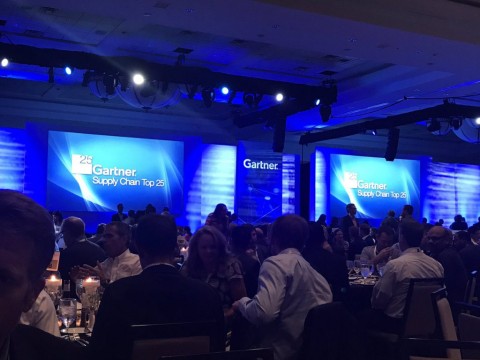A few years ago, Kevin O’Marah said Gartner’s Top 25 Supply Chains was getting increasingly boring. Apple and P&G were annually #1 and #2. So Gartner looked at the numbers and created the Masters category. The criteria in qualifying for the Masters category is any company who has been in the top five rankings for at least seven out of the past 10 years. This year, Amazon was voted off the regular list, and joins Apple and P&G in this Masters category. In 2019, it’s likely both Unilever and McDonald’s will also be voted off the island and move into the Masters category, as well. Gartner’s Top 25 Supply Chains has become like watching Survivor, the reality TV show that places people on a remote location, where they outwit, outplay and outlast the others. I laugh when they vote out the Navy Seal or the Triathlete. Then, they have no food and lose the following week’s challenge. At tribal council, they wonder why they lost. Easy answer here – vote out the best and the tribe gets weaker. Or, as Nature Boy Ric Flair says, “If you want to be the man, you gotta beat the man.” Something needs to be done differently in the Masters category if Gartner wants to avoid simply having two lists.
Once again – Peer vs Gartner
Another change needed is the vast difference between how the 169 peers vs the 38 Gartner analysts rank the companies.
| Gartner Analysts Top 10 - 2017 | Peers Top 10 - 2017 |
|
Unilever Cisco Systems Intel McDonald's PepsiCo Nestlé Inditex Schneider Electric Colgate-Palmolive BASF |
Unilever Coca Cola Company Wal-Mart Stores Nike McDonald's Inditex Nestlé Cisco Systems PepsiCo Samsung Electronics |
Intel is ranked third by Gartner, but 11th by peers. Samsung is 10th according to peers, while Gartner places them in spot 25. As I’ve stated in the past, if Gartner was to see Samsung’s supply chain up-close, they would rank them first. HP is 24th according to peers, but 11th according to Gartner. This is a company that has been separated, had negative revenue growth at -5.4% and changed CEOs many times in the past 10 years. I recommend keeping the peer review and Gartner analyst inputs, but dropping their weighting in the overall rankings from 25% to 5% each. Then, create a new panel (15%) made up of key Gartner analysts, peers and consultants that have actually worked in supply chain and have seen and know how the top 50 operate their supply chains.
Somehow, normalize the odd numbers
McDonald’s has an inventory turn of 174.5. That’s 11.6 times higher than the second-ranked supply chain, with Samsung at 15.1. Consider that Samsung has consumer electronics, visual display, semiconductor, heavy industry and biotech divisions. We need to figure out how to normalize this oddity that keeps McDonald’s in the top five every year. For Nokia, I struggle to understand how they were ranked. Microsoft acquired them in 2013, the company then laid off 12,500 people in 2014, then acquired Alcatel Lucent only to sell off a business unit to Foxconn. The magic is in the three year revenue growth. Nokia was tops at 46%. However, when you look at the 2015-2016 revenue growth, Nokia’s networking business grew 90%, while their Nokia Technologies only grew 3%. With life sciences, semiconductors and others making acquisitions, we need to figure out how to normalize the revenue growth created more by an acquisition, rather than supply chain prowess.
How does legal and public relations play in supply chain?
Lastly, I just don’t see the value of having the corporate social responsibility (CSR) category. In some companies supply chain doesn’t drive or own the CSR report at all. We have enough categories (like return on assets (ROA)) that already make it difficult for some great supply chains to get ranked. In this area, Gartner should push the metrics benchmark. I recommend Gartner have the top 50 supply chains enter their metrics benchmark data and create a category that uses a combination of these best-in-class benchmarks. I do love the concept of elevating the supply chain through a Top 25 ranking. Gartner does a good job at pulling what data is publicly available. I do worry that a few years ago, the boring comments, which caused the Masters creation, will be replaced with a numbers credibility comment. Two groups, Masters and Top 25, is not a good end state. We need to make the push to get core supply chain data and an expert panel to enhance the Top 25 votes.





Leave a Reply